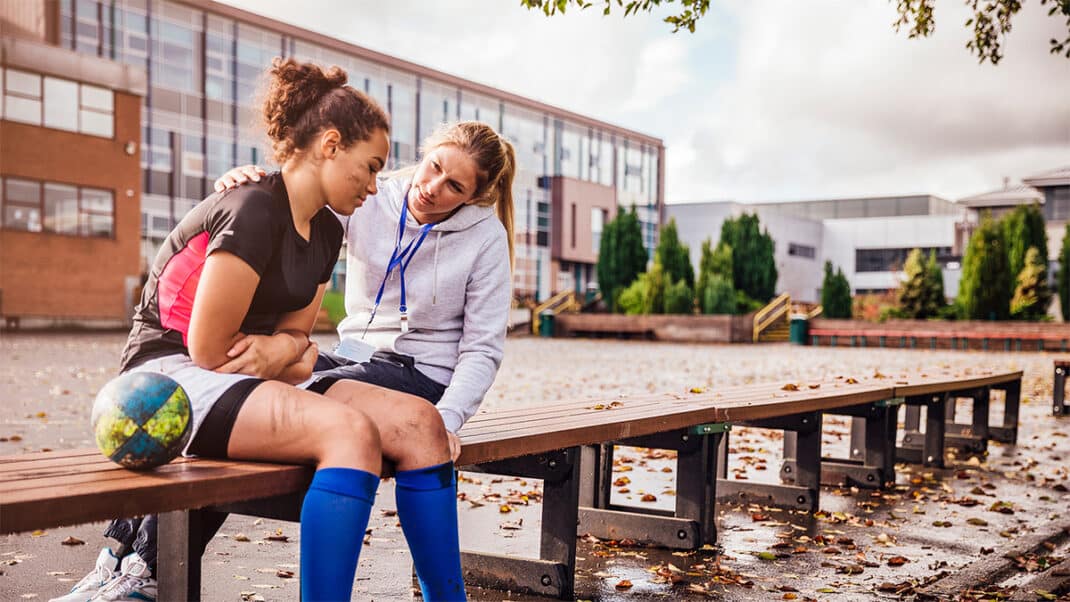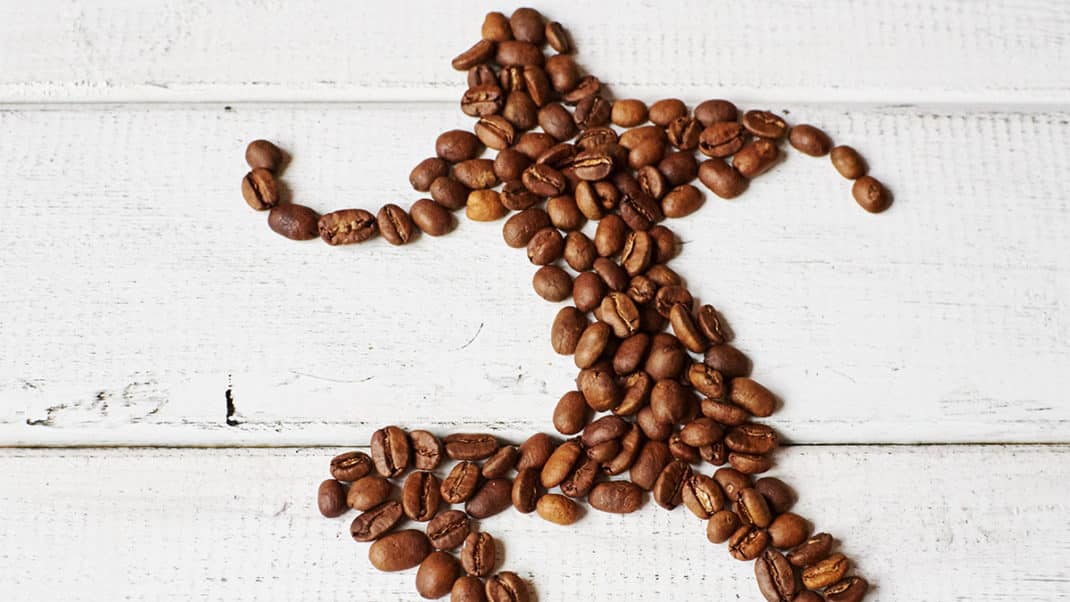The Benefits of Pilates for Athletes
Understand how a Pilates practice can help athletes with sports performance.

Joseph Pilates said: “Physical fitness is the first requisite of happiness.” He believed a foundation of fitness and healthy living resulted in a happier life. More recent studies have tested that hypothesis by examining the qualitative benefits of Pilates practice. How do these benefits come into play with Pilates for athletes?
In research led by Lynne Gaskell, MS, lecturer at the University of Salford in England, investigators looked at the impact of Pilates practice on the lives of 15 women and men with chronic musculoskeletal conditions like lower-back pain and osteoarthritis. In addition to finding physical improvements, the study showed such benefits as a more active lifestyle, the ability to manage individual conditions more effectively, increased feelings of self-confidence and improvements in social life (Gaskell & Williams 2018). “Improving function in meaningful daily activities produced psychological and social benefits that increased motivation to adhere to the program and promote a healthier lifestyle,” Gaskell says.
These findings confirm an important aspect of Pilates training: While studies comparing Pilates with other exercise interventions show it is not more effective with regard to physical improvements, Pilates has a relatively high adherence rate and people of all levels of ability enjoy the practice.
“Pilates is an excellent choice for developing a baseline of muscular fitness and flexibility, which is what is needed to couple one’s practice with more vigorous cardio activity,” says Michele Olson, PhD, a Pilates researcher who works with student athletes. “Pilates will prepare virtually anyone for the requirements of more intense exercise by helping to build good balance and strong, spine-saving core muscles, while also helping to improve mood and ease stress.”
Although many leading athletes swear by Pilates, there is little high-quality published research related to the method and sports performance. Olson is among researchers who have seen direct evidence of its effectiveness. “My research and others’ show the ability of Pilates to recruit the deep core for spinal stabilization,” she says. “A distance program I did with former tennis pro Anna Kournikova employed the hundred, rollup, double-leg stretch and variations of the teaser. She reported positive effects for strength and appearance.”
Olson adds that “another major benefit of Pilates for athletes is the ‘mindfulness’ aspect of the method. Athletes undergo formal psychological coaching to ‘stay in the moment,’ ‘focus on the ball, not the opponent’ and more.”
Christine Romani-Ruby, DEd, MPT, owner of PHI Pilates in Pittsburgh and a Pilates master trainer and researcher, also trains elite athletes. She says, “Good posture, improvements in flexibility, muscle balance and core stability, and increased confidence [from Pilates training] all correlate with injury prevention, performance enhancement and longevity in sport.”
Of note: In a study of 32 experienced male runners ages 18–28, those who did mat Pilates for an hour twice-weekly for 12 weeks had a significantly faster 5K running time and, according to electromyography activity, had less muscle activation, suggesting better “neuromuscular economy.” Study authors believe this was due to control and stabilization of the lumbopelvic region (Finatto et al. 2018).
See also: 5 Ways Pilates Can Benefit Athletic Clients
Game-Changing Benefits of Pilates for Athletes
From recreational athletes to Olympians and professionals with million-dollar contracts, competitors rely on Pilates. Pilates master trainer Romani-Ruby has worked with football, hockey and baseball pros and more. She notes the following important performance benefits of Pilates training for athletes:
Stability for Flexibility
Studies show that greater core stability leads to improvements in length and flexibility of the hamstrings—critical for increasing speed. Pilates enables athletes to work through dynamic flexibility exercises while simultaneously improving core strength, leading to increases in overall speed.
Explosive Power
Spring resistance on the Pilates reformer and jump board are ideal for plyometric training, allowing athletes to practice rebounding and exploding with control—an asset for basketball players and wide receivers.
Precise Movement
Pilates emphasizes mindful, efficient movement, which translates into fewer injuries and improves execution on the playing field. Increasing awareness of overall movement and body position in space improves agility and alignment.
Longevity
Pro athletes experience aging like other adults. At age 30, adults begin to lose connection with hip joints for balance and mobility and start to lose overall muscle mass. Paraspinal muscles are the areas that weaken most. Pilates builds muscle balance and works against postural changes that come with age, resulting in healthy movement patterns that can prevent overuse injuries and keep athletes in the game.
Efficient whole-body workouts. Pro athletes are busy. The Pilates method uses whole-body movements for short, efficient training. A 15-minute workout can challenge all the body’s muscle groups for a time-saving addition to an athlete’s regular routine.
Applying Research to Pilates for Athletes
Lisa Marie Bernardo, PhD, MPH, RN, a certified Pilates instructor in Pittsburgh, has co-authored Pilates research studies. She recommends that Pilates instructors keep up with research findings and suggests the following for putting research into practice:
- Read original research published in peer-reviewed journals.
- Discuss research findings with other instructors and clients.
- Contact the Pilates investigator (study author) and ask specific questions; for example, find out what exercises, sequencing, number of repetitions and equipment were used in the study.
“Investigators are always excited to discuss their research and are usually willing to share their publication if the Pilates instructor is unable to obtain the original study,” Bernardo says.
See also: The Science of Pilates: Research Update
References
Finatto, P., et al. 2018. Pilates training improves 5-km run performance by changing metabolic cost and muscle activity in trained runners. PLOS One, 13 (30), e0194057.
Gaskell, L., & Williams, A.E., 2018. A qualitative study of the experiences and perceptions of adults with chronic musculoskeletal conditions following a 12-week Pilates exercise programme. Musculoskeletal Care, 17 (1), 54–62.
Shirley Eichenberger-Archer, JD, MA
Shirley Archer, JD, MA, is an internationally acknowledged integrative health and mindfulness specialist, best-selling author of 16 fitness and wellness books translated into multiple languages and sold worldwide, award-winning health journalist, contributing editor to Fitness Journal, media spokesperson, and IDEA's 2008 Fitness Instructor of the Year. She's a 25-year industry veteran and former health and fitness educator at the Stanford Prevention Research Center, who has served on multiple industry committees and co-authored trade books and manuals for ACE, ACSM and YMCA of the USA. She has appeared on TV worldwide and was a featured trainer on America's Next Top Model.






